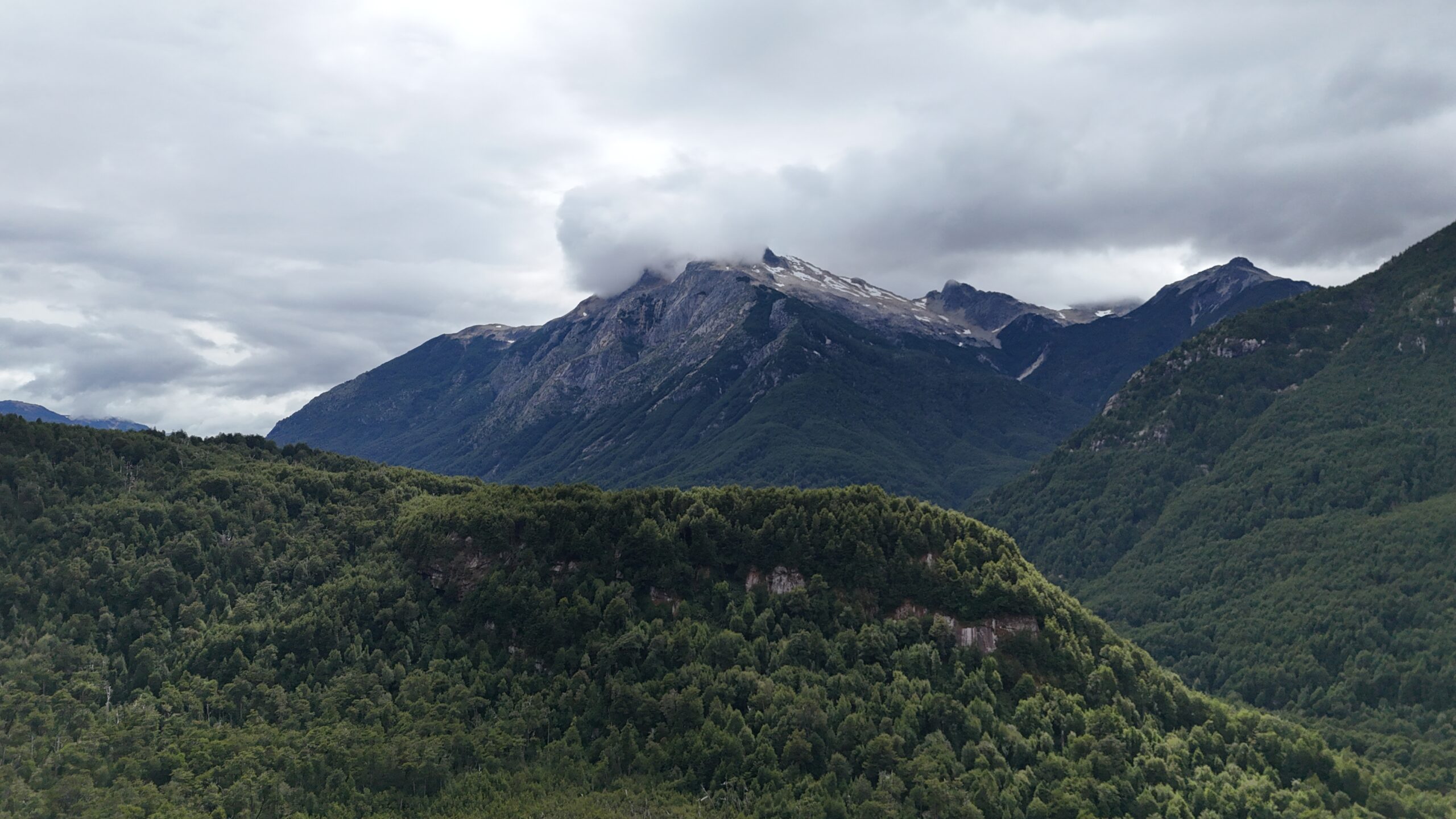The Patagonia Giant Bumblebee

I heard about it long before we went to Patagonia…”The flying mouse” is what is has been called because it is so large and the orange/red coloration and fuzziness makes it look like a cute, little rodent. The large size is attributed to the queen bees, as workers are always smaller; regardless, it is a distinctive and charismatic bee. So when we saw one while driving through the mountains of southern Chile, we immediately pulled over and cherished our time with these dwindling insects.

The Patagonia giant bumblebee (Bombus dahlbomii) is a remarkable species native to the southern regions of South America, particularly in Chile and Argentina. B. dahlbomii is also the only native bumblebee species in southern South America. Known for its impressive size and striking coloration, it is one of the largest bumblebees in the world. This species plays a crucial role in local ecosystems as a pollinator, contributing to the health and diversity of the flora in its habitat.
Habitat
The Patagonia giant bumblebee thrives in the temperate and subantarctic regions of southern Chile and Argentina. It prefers habitats such as mountain meadows, subalpine grasslands, and temperate forests. These environments offer a rich variety of flowering plants, which are essential for the bee’s foraging and nesting activities. The species is well-adapted to the cool, often harsh climatic conditions of its range. We encountered the specimen photographed below in the temperate rainforest region south of Puerto Monte, Chile.



Behavior
Patagonia giant bumblebees are known for their robust and slow-flying nature. They are important pollinators for many of the native plants in their habitat. These bumblebees exhibit a high degree of social behavior, living in colonies that can include hundreds of individuals. Each colony is led by one queen, who is responsible for laying eggs, while the worker bees handle foraging and colony maintenance.
Life Cycle
The life cycle of the Patagonia giant bumblebee follows the typical pattern of bumblebees. It begins with the queen emerging from brumation (yes! This is a real word 🙂 It is “hibernation” for cold blooded animals) in spring and establishing a new colony. She lays eggs that develop into workers over the summer. In late summer or early fall, new queens and males are produced, which mate before winter. The fertilized queens then hibernate until the next spring, restarting the cycle.

Photo Credit: USGS Bee Inventory
Important Flowers
Patagonia giant bumblebees are crucial pollinators for a variety of native South American plants. They are particularly attracted to flowers with tubular shapes and rich nectar, such as those found in the families of Solanaceae (nightshades) and Asteraceae (daisies). These plants not only rely on the bumblebees for pollination but the plants also provide the bees with the necessary nutrients to sustain their colonies. The flowers we saw the bumbles foraging on were the Fuchsia magellanica, commonly known as the Magellan’s fuchsia or the Chilean fuchsia. It has a striking pink and purple flower and is native to the temperate regions of southern South America, including Chile and Argentina.
Threats
The Patagonia giant bumblebee faces several threats, primarily from habitat loss due to agricultural expansion and climate change. The destruction of its natural environment and changing weather patterns can significantly impact its food sources and nesting sites. Additionally, the introduction of non-native species and diseases can further stress local bumblebee populations. The main invasive pest is Bombus terrestris, or Buff-Tailed Bumblebee (pictured below with the white-tipped abdomen). This bumblebee was imported for greenhouse pollination from Europe and then escaped into the wild and reproduced. It is believed that both the competition from this non-native species, as well as a gut disease that it spread to the native bumblebees is a contributing factor to the decline of the Patagonia Giant Bumblebee. When we inspected flowers on our Radical Sabattical trip in South America, the invasive buff-tailed bumblebee was the most common bee that we saw foraging on flowers (even all the way down in the most southern city in the world!).

Fun Facts
- The Patagonia giant bumblebee is distinguished by its large size and bright red orange and black coloration, making it a standout among bumblebee species.
- Its large size enables it to pollinate flowers that smaller bees cannot reach, playing a unique role in its ecosystem.
- Despite its formidable size, it is generally non-aggressive and more focused on foraging than on defending its nest.
- Some of the last bastions of Giant Patagonia Bumblebee populations are remote mountains in Chilean and Argentine Patagonia. This is because many bumblebees are specifically suited to cold climates, being able to vibrate their wing muscles to generate their own heat.

